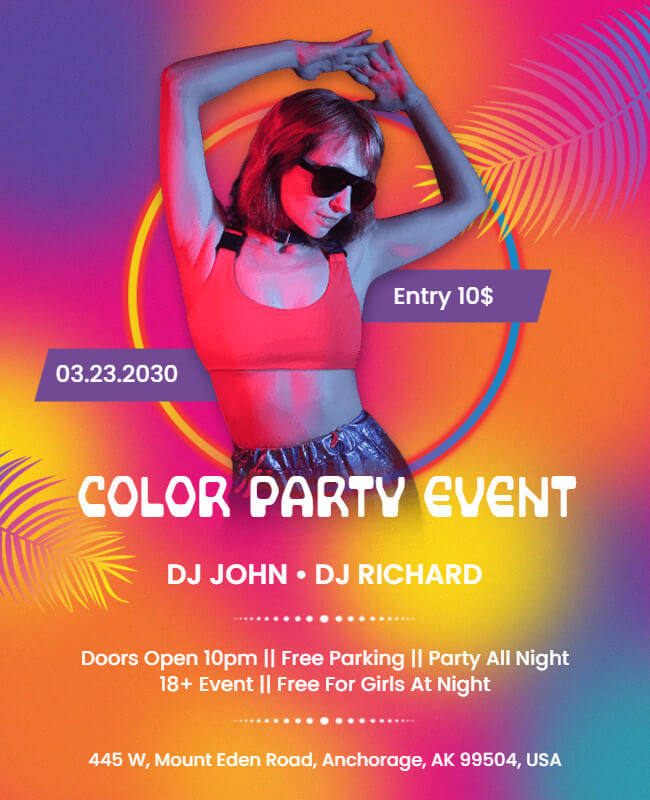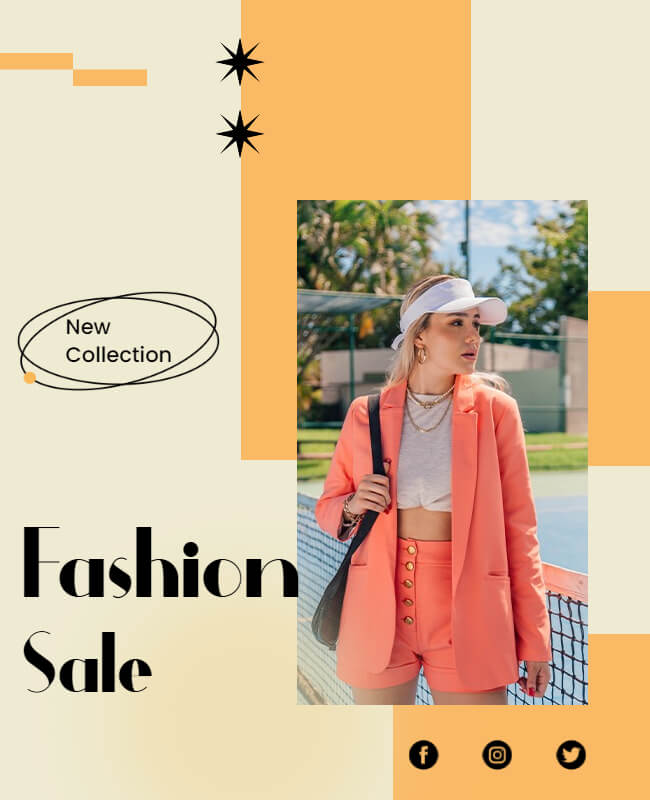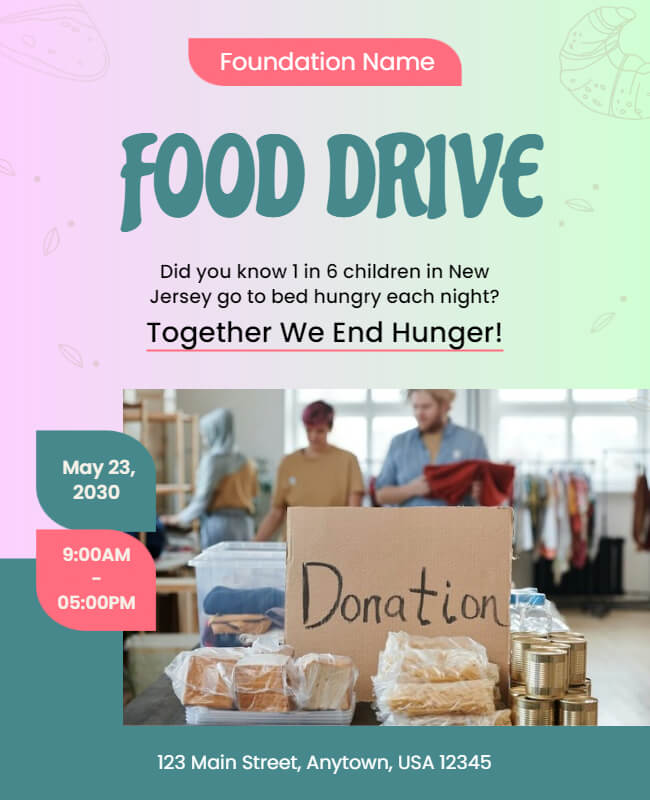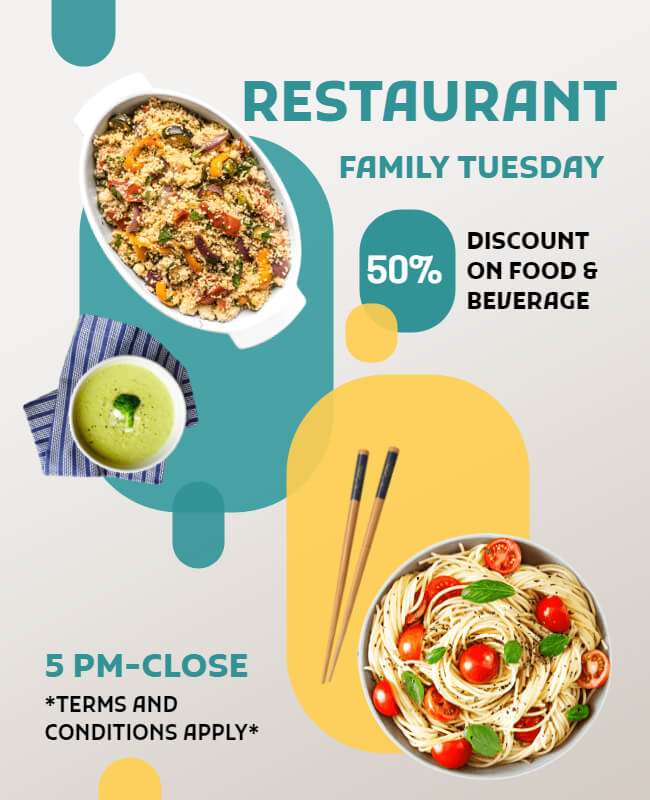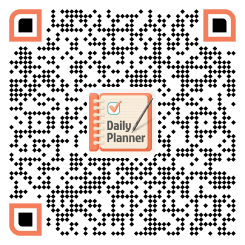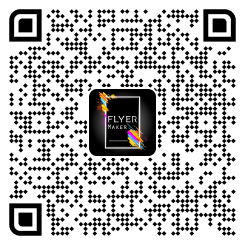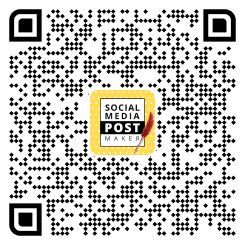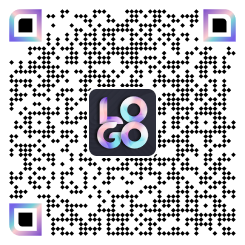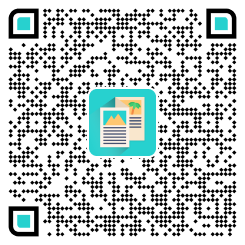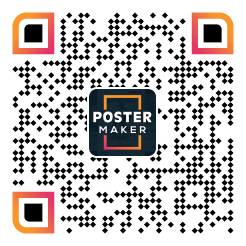In a world full of digital screens and endless notifications, something is interesting about a simple piece of paper that grabs your attention and delivers a message. This is what is a flyer – a compact, colorful, and intriguing communication tool that has been a staple in marketing for generations.
In this blog, we’ll cover the basics of flyers what is a flyer, flyer purpose, how to make a flyer, different types of flyer, their benefits, common mistakes, and how they differ from pamphlets. We will also learn to craft impactful flyers easily.
Let’s find out exactly what is a flyer and why people use it.
What Is a Flyer?
A flyer is a kind of paper that people use to share information about events, products, services, or ideas. It’s usually a small piece of paper, similar to a handout, designed to catch people’s attention quickly.
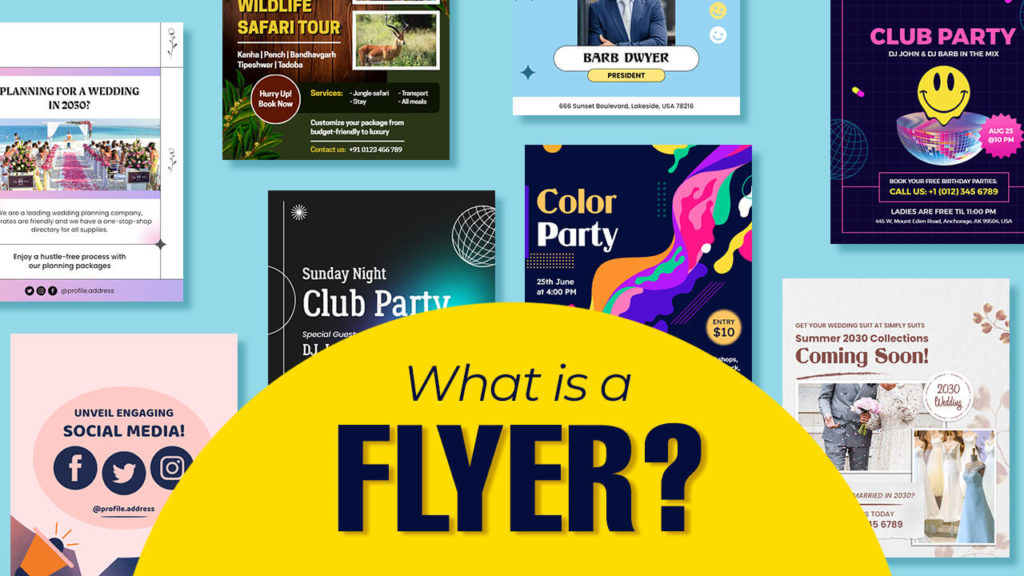
People make flyers to let others know about things like parties, sales, concerts, or even important notices. They often have colorful pictures, catchy words, and important details like dates, times, and locations.
Now that we know what is a flyer, let’s dive into their purpose and find out why they’re so important.
The Purpose of Flyers
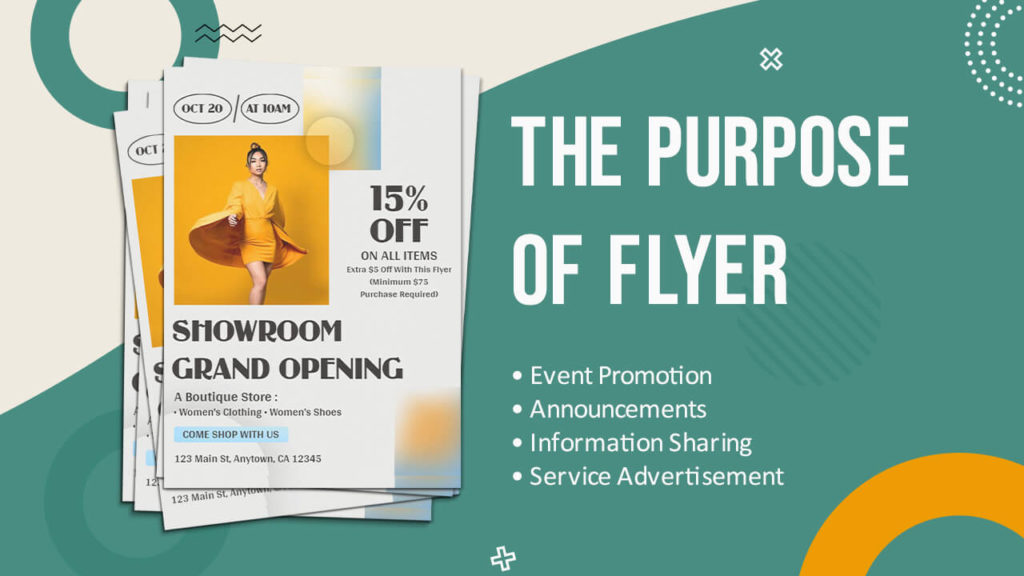
The purpose of a flyer is to effectively convey information, promote an event, product, service, or cause, and capture the attention of the target audience. It’s made to look interesting and share important details. Flyers use a mix of words and pictures to share a short and clear message. They serve as a quick and convenient way to spread awareness, share details, and encourage action among a wide range of people. Some common purposes of flyers include:
1. Event Promotion
Flyers are often used to promote events such as concerts, workshops, fundraisers, and parties. The vibrant visuals and concise details on a flyer help generate interest and encourage attendance.
2. Product or Service Advertisement
Businesses use flyers to showcase their products or services. A well-designed flyer can highlight key features, benefits, and special offers, enticing potential customers to make a purchase.
3. Information Sharing
Flyers are also employed to distribute information about community services, public awareness campaigns, and educational programs. They help raise awareness and encourage engagement with essential topics.
4. Announcements
If you’re beginning something fresh, hosting a major event, informing folks about a new shop, or giving them a heads-up about an upcoming sale, using flyers is a great way to spread the word and ensure that people are aware of what’s going on.
If you’d like to learn more about creating impactful flyers and maximizing their effectiveness, check out these flyer purposes.
The purpose of a flyer is more than just distributing information; it’s about inspiring action. With this understanding, let’s explore the key components that transform a simple piece of paper into an effective tool of engagement.
Key Components of an Effective Flyer
A well-crafted flyer consists of several key components that work together to create a visually appealing and informative piece. These components ensure that your message is clear, engaging, and memorable.
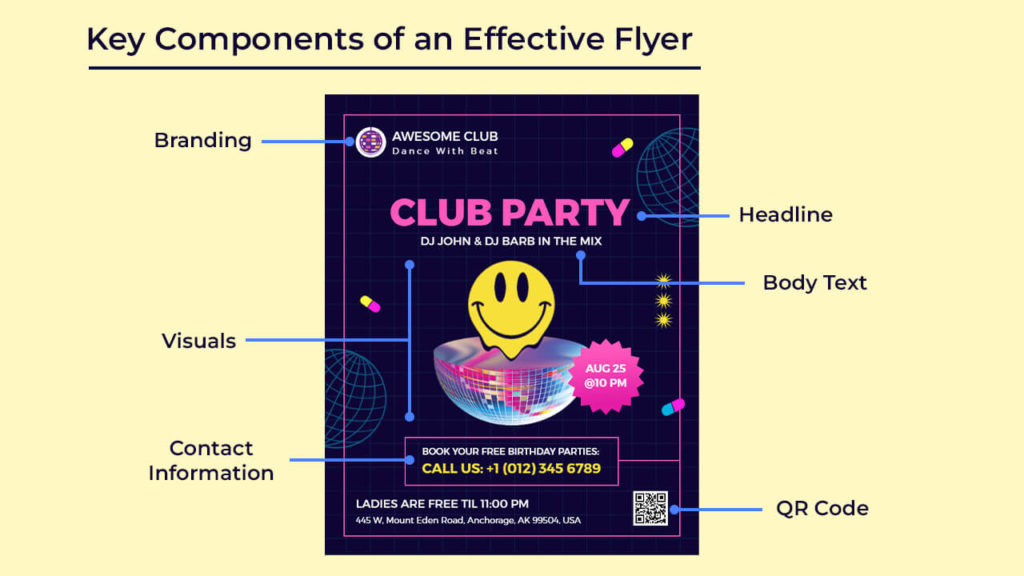
1. Headline
The headline is the first thing readers see, so it should be attention-grabbing and concise. It conveys the main message of the flyer in just a few words.
2. Visuals
High-quality images or graphics are essential to capture the reader’s attention and convey the theme of the flyers. Visuals should be relevant to the content and evoke the desired emotions.
3. Body Text
The body of the flyer provides more details about the event, product, or service. Use concise language and bullet points to make the information easy to read and understand.
4. Contact Information
Include contact details such as phone numbers, email addresses, and social media handles. This allows readers to quickly get in touch for more information.
5. Branding
Consistent branding elements, such as logos and color schemes, reinforce brand identity and make the flyers easily recognizable.
6. QR Codes
QR codes can provide a quick way for readers to access additional information or special offers by scanning the code with their smartphones.
Remember, the synergy of these elements can make or break the impact of your flyers. Now, let’s explore the diverse types of flyers.
Different Types of Flyers
Flyers are a popular marketing and promotional tool used to convey information about an event, product, service, or message. They come in various types and styles, each serving a specific purpose. Here are some common types of flyers:
Event Flyers
These are used to promote various events like concerts, parties, fundraisers, workshops, seminars, conferences, and more. these typically include event details such as date, time, location, and ticket information.
Also Read: Event Flyer Ideas & Examples
Promotional Flyers
These flyers are designed to promote sales, discounts, special offers, or new products/services. Promotional flyers often include eye-catching visuals and persuasive language to attract customers.
Also Read:- Sales Flyer Ideas: Tips to Boost Your Marketing Efforts
Business Flyers
Business flyers provide information about a company, its services, and contact details. They are used to promote businesses, highlight their key offerings, and build brand awareness.
Also Read: Creative Business Flyer Examples
Real Estate Flyers
Real estate flyers are used by real estate agents and property owners to showcase properties for sale or rent. These flyers include property details, photos, and contact information.
Also Read:- Creative Real Estate Flyer Ideas
Educational Flyers
Education institutions use these to promote courses, workshops, seminars, and educational programs. Educational flyers provide information about the curriculum, instructors, and enrollment details.
Also Read: Educational Flyer Examples and Ideas
Fundraising Flyers
Nonprofits and charitable organizations use Fundraising Flyers to raise awareness about fundraising campaigns, charity events, and donation opportunities.
Also Read:- Fundraising Flyer Ideas and Examples
Travel and Tourism Flyers
Tourism boards use travel flyers to make people interested in going on vacations. Travel flyers have colorful designs and attractive information about vacation packages, places to visit, and special offers. They make people feel excited about traveling and inspire them to go on trips to new and exciting places.
Also Read: Travel Flyer Design Ideas
Food and Restaurant Flyers
Restaurants and food businesses use restaurant flyers to showcase their menu items, special dishes, and delivery/takeout options.
Also Read: Food Flyers Examples
Health and Fitness Flyers
Gyms, fitness centers, and wellness programs use fitness flyers to advertise fitness classes, training sessions, and health-related events.
Also Read: Fitness Flyer Ideas and Examples
Fashion and Beauty Flyers
Fashion brands and beauty salons use these flyers to display their newest collections, trends, services, and promotions. These attractive salon flyers act as invitations to discover the most recent trends and beauty services they provide.
Also Read: Salon Flyer Ideas and Examples
When making flyers, think about who you want to see it, what you want to say, how it looks (colors, fonts, images), and where you’ll share it. Good flyers get your message across clearly and look nice, so they catch people’s eye and keep things simple.
With an overview of the diverse flyer types, let’s now uncover the benefits that make these promotional tools a valuable asset.
Benefits of Using Flyers
- Quick Communication: Flyers convey essential information rapidly.
- Cost-Effective: Inexpensive to produce and distribute.
- Tangible Impact: The physical format grabs attention effectively.
- Wide Reach: This can be handed out or posted in various locations.
- Visual Appeal: Design elements make content memorable.
Having explored the advantages of flyers, it’s important to also be aware of common mistakes to ensure your flyers shine above the rest.
Common Flyer Design Mistakes to Avoid

Creating effective flyers is important for conveying your message and attracting attention. Here are some common flyer mistakes to avoid:
Too Much Text: Keep it simple. Avoid using too many words. People should be able to understand your message at a glance.
Small Fonts: Use large, readable fonts. Small fonts can be hard to read, especially from a distance.
Cluttered Design: Don’t overcrowd your flyer with images and information. A clean layout with enough white space is more appealing.
Lack of Focus: Your flyers should have a clear message or purpose. Avoid mixing multiple ideas, as it can confuse readers.
Poor Quality Images: Blurry or pixelated images look unprofessional. Use high-resolution images to maintain a polished look.
Missing Contact Information: Always include your contact details like phone number, email, and social media. People should know how to reach you.
Now, let’s find out how flyers are different from pamphlets.
What is the Difference Between a Flyer and a Pamphlet?
Here’s a comparison between flyers and pamphlets:
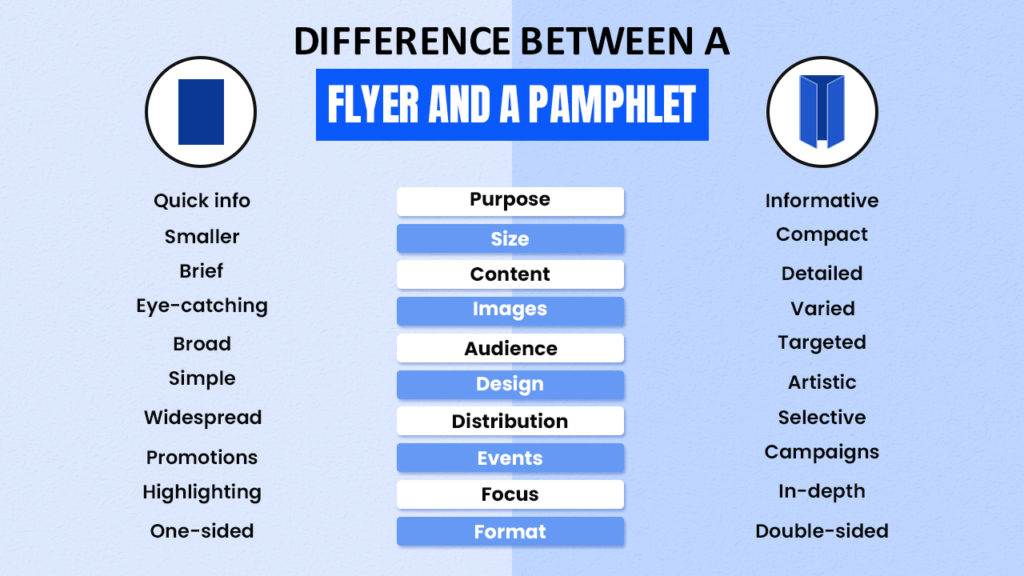
| Aspect | Flyer | Pamphlet |
|---|---|---|
| Purpose | Provides quick information | Offers detailed information |
| Size | Smaller and more concise | Compact but with more content |
| Content | Brief messages | In-depth and comprehensive |
| Images | Eye-catching visuals | Varied images and graphics |
| Audience | Targets a broad audience | Tailored for specific readers |
| Design | Simple and straightforward | Artistic and visually appealing |
| Distribution | Widely distributed | Selectively distributed |
| Events | Promotes events and specials | Supports campaigns and causes |
| Focus | Highlights key points | Explores topics extensively |
| Format | Usually single-sided | Often double-sided |
- Purpose:
- Flyer: Offers quick information, often for promotions.
- Pamphlet: Provides detailed information on a topic.
- Size:
- Flyer: Smaller and easily handheld.
- Pamphlet: Compact but slightly larger.
- Content:
- Flyer: Brief and to the point.
- Pamphlet: Contains more comprehensive details.
- Images:
- Flyer: Focuses on eye-catching visuals.
- Pamphlet: Includes varied visual elements.
- Audience:
- Flyer: Targets a broad audience.
- Pamphlet: Aim at a specific, targeted audience.
- Design:
- Flyer: Keeps the design simple.
- Pamphlet: Often features more artistic design elements.
- Distribution:
- Flyer: Widely distributed at events.
- Pamphlet: Selectively distributed for campaigns or specific purposes.
- Events:
- Flyer: Used for promoting events.
- Pamphlet: Part of comprehensive campaign materials.
- Focus:
- Flyer: Highlights key points and offers.
- Pamphlet: Dives into in-depth information.
- Format:
- Flyer: Usually one-sided.
- Pamphlet: This can be double-sided for more content space.
Remembering these differences can help you choose the right word when you’re talking about your flyers. Now, let’s learn how to create flyers.
How to Make a Flyer
Creating a flyer with PhotoADKing is super easy:
Step 1:
Sign up with PhotoADKing
Step 2:
Choose a Flyer Template
Step 3:
Customize your flyer by altering colors, fonts, and layout for a unique look.
Step 4:
Save and Download your flyer
To Sum Up
A flyer serves as a succinct and visually engaging medium of communication, designed to convey information, promote events, or highlight offerings in a concise manner. Through its strategic use of text and imagery, a flyer captures attention and swiftly imparts its message to a diverse audience. Its simplicity and straightforwardness make it a powerful tool for both people and businesses to share important information and create a strong impact. This helps connect the dots between information and interaction, making sure the message sticks with the audience.
Creating a professional-looking flyer doesn’t require advanced design skills. With PhotoADKing’s flyer maker, anyone can design captivating flyers with ease. Flyer maker tools offer templates, images, and customization options to suit various needs.
So, are you ready to take your flyer design to the next level? Explore creative flyer templates and let your creativity flow to craft stunning flyers that leave a lasting impression.
FAQs
In a flyer, various key elements come together to effectively convey the message. These components, such as the headline, visuals, body text, contact details, and a call to action, collaborate to achieve this goal.
When you make a flyer, think about using pictures that catch people’s eyes, writing short and clear sentences, keeping the same look for your brand, and making the design simple but pretty.
Anyone looking to promote an event, product, service, or message can use a flyer. This includes businesses, organizations, individuals, and nonprofits.
The common size of a flyer is 8.5 x 11 inches, which is equivalent to letter size.

